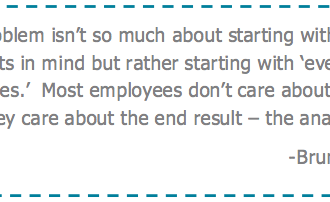The cloud may not be delivering everything being promised, but it is nonetheless a disruptive force to which enterprises, service providers and vendors alike ignore at their peril.
The cloud may not be delivering everything being promised, but it is nonetheless a disruptive force to which enterprises, service providers and vendors alike ignore at their peril.
 Does cloud offer a new horizon, or the same old thing? Photo: NASA
Does cloud offer a new horizon, or the same old thing? Photo: NASA
That’s one of the takeways from a panel I had the opportunity to join at this week’s CompTIA Breakaway conference, addressing ways to cut through the fog of cloud computing, led by Bob Dirkes of TechImage.
As Bob roved the audience Oprah style, he put a question out there that surely is on the mind of every seasoned IT veteran with at least a decade or more experience: we hear about all this business transformation that’s now going to take place thanks to cloud computing. But the phrase “business transformation” gets uttered every time vendors and analysts are pushing some new paradigm, be it PCs or client/server or Web computing or whatever.
Why is it different this time, or is it any different?
My colleagues on the panel all provided great and thoughtful responses. 2112 Group’s Larry Walsh pointed out that cloud is destroying far more jobs and channel relationships than it creates. He also said that the process of transformation doesn’t mean it comes to some sort of conclusion at some point — it’s a process that is ongoing, and will remain so. FierceCIO’s Caron Carlson also sees new forces shaping the IT landscape because of cloud, taking note of the rise of “rogue IT” that needs to be reckoned with.
My response was that cloud is tranformative, but for reasons beyond efficiency and cost-savings. Yes, cloud — as has any and all forms of automation over the years — means replacing manual tasks with machine-driven tasks, which means fewer jobs in a particular area. And, yes, cloud is a new way to cut costs and gain efficiencies.
But the real revolution is only just begun. Many of the points I mentioned I’ve raised previously at this site, and I’ll raise them again: At the high end, private and hybrid clouds are shifting the business models of many non-IT corporations and organizations, turning them into technology or cloud providers themselves. At the lower end, we have a whole generation of startups and small businesses that are built entirely on the cloud. In between, we have “loosely coupled” corporations that essentially serve as brokers of services they get from somewhere else and deliver to their customers.
Here’s how cloud is changing the way we do business — something unheard of previously in the technology space:
Every company now an IT company: In the IT world, the divide has been very clear cut: there were the vendors who provided technology products and services, and there were customers that purchased and used them. Cloud computing is blurring these distinctions. There’s nothing stopping companies that are adept at building and supporting their own private clouds from offering these services to partners and customers beyond the firewall. In fact, many already do. Amazon was an online retailer that began to offer its excess capacity to outside companies. Even non-IT companies are becoming cloud providers. Cloud computing may finally mean a way for IT to finally become a profit center.
“Loosely coupled corporations”: The term “loosely coupled” came into vogue with service-oriented architecture a few years ago, meaning an entity or system stands fine on its own, but when linked to other like systems, the magic happens. Cloud computing is paving the way for the loosely coupled company – which may be an entity that exists purely as an aggregation of third-party services, provided on an on-demand basis to meet customer demands. Most of these services will be passed through as cloud services, both from within the enterprise and from outside.
“Extremely lightweight businesses”: Let’s face it, there’s no point in investing $50,000 or more in servers and software when everything you need is right in the cloud. As we ponder unemployment and underemployment in our economy, the availability of cheap cloud computing may be laying the groundwork for a startup boom, the likes we have never seen before. Call them XLBs, or “extremely lightweight businesses.” This applies to departments of larger organizations as well, by the way. Designing new products, without the need to go through corporate finance and IT approvals definitely is a great way to instill entrepreneurial spirit.








